Table of Contents
ToggleIn the ever-evolving world of technology, understanding the jargon can feel like deciphering an ancient language. Enter PaaS, or Platform as a Service, the superhero of cloud computing that swoops in to save developers from the clutches of tedious infrastructure management. Imagine having the power to build, test, and deploy applications without worrying about the underlying hardware. Sounds like magic, right?
What Is PaaS?
Platform as a Service (PaaS) provides a cloud environment for developers to build, test, deploy, and manage applications. Focusing on development, PaaS minimizes the need for managing underlying infrastructure.
Key Characteristics of PaaS
Scalability defines PaaS, allowing users to adjust resources as application demand changes. Flexibility in using various programming languages ensures developers can choose their preferred tools. Built-in development tools streamline the app creation process, enhancing productivity. Moreover, automatic updates maintain the software, ensuring developers always use the latest versions. PaaS also integrates seamlessly with databases, enabling efficient data management.
Benefits of PaaS
Cost efficiency stands out among PaaS benefits, as it reduces the need for physical hardware investments. Speed in deploying applications increases competitiveness, allowing quicker market entry. Resource management simplifies infrastructure tasks, letting developers focus on core application functionalities. Additionally, collaboration tools foster teamwork by enabling multiple users to work on projects simultaneously. Continuous integration and delivery capabilities enhance development cycles, ensuring frequent updates without disrupting services.
Types of PaaS Solutions

PaaS solutions can be categorized into public and private offerings, each serving distinct organizational needs.
Public PaaS Providers
Public PaaS providers supply a cloud platform accessible to multiple users. Examples include Google App Engine, Heroku, and Microsoft Azure. These platforms feature shared resources, offering scalability and flexibility essential for various development projects. They enable developers to deploy applications quickly, taking advantage of built-in tools and services. Organizations benefit from reduced operational costs and improved collaboration features as they share resources with other users. This access promotes innovation without the burden of maintaining hardware.
Private PaaS Offerings
Private PaaS offerings deliver a dedicated platform hosted within an organization’s infrastructure. Solutions like Red Hat OpenShift and Salesforce App Cloud exemplify this approach. Security and control rank high among the reasons companies opt for private PaaS. Customization allows organizations to tailor the environment to their specific needs. These platforms support sensitive data management while ensuring compliance with industry standards. Scalability remains available, but it’s limited to the organization’s infrastructure, enhancing control over resources.
PaaS vs. Other Cloud Models
PaaS stands out in the cloud computing landscape, offering distinct advantages compared to other models.
PaaS vs. IaaS
PaaS simplifies the development process, whereas Infrastructure as a Service (IaaS) provides virtualized computing resources over the internet. With PaaS, developers focus on creating applications without the complexities of managing servers or storage. IaaS, by contrast, requires users to manage aspects of virtualization, operating systems, and applications. For example, while PaaS platforms like Google App Engine manage the underlying infrastructure, IaaS providers like Amazon EC2 give users complete control over their virtual machines. Scalability appears more straightforward with PaaS, as developers can easily adjust their platforms to meet demand without extra maintenance effort.
PaaS vs. SaaS
PaaS enables developers to build applications, while Software as a Service (SaaS) delivers ready-to-use software via the cloud. Developers leverage PaaS to create custom solutions tailored to their needs. Examples include Microsoft Azure and Heroku, which provide necessary tools for development. Users typically access SaaS applications, such as Salesforce or Dropbox, through a subscription model without managing underlying infrastructures or development processes. Customization in PaaS allows for unique application development, while SaaS offers limited flexibility in changing features or functionalities. Both models support scalability, but PaaS puts more emphasis on the development lifecycle, enhancing application delivery speed.
Applications of PaaS
PaaS plays a vital role in streamlining application development and deployment, offering tools that enhance efficiency and collaboration.
Development and Testing
Development teams leverage PaaS for rapid application creation and testing. Built-in development tools and environments simplify processes, allowing developers to write code easily. Automated testing frameworks integrated into PaaS platforms facilitate quicker feedback loops. Organizations can deploy applications frequently, ensuring they remain competitive. Real-time collaboration features enhance teamwork, resulting in improved communication across departments. Enhanced integration with version control systems allows for seamless code management. Teams can focus more on building innovative solutions instead of getting bogged down by setup configurations.
Integration and Management
Managing applications becomes straightforward with PaaS integration capabilities. PaaS platforms support seamless connectivity with existing tools and services. Organizations benefit from built-in service orchestration, which coordinates multiple services effectively. Monitoring features provide insights into application performance, enabling immediate optimizations. Scalability is inherent, accommodating increased loads as projects grow. Data management tools within PaaS facilitate easier access and manipulation of databases. Security features help ensure compliance, protecting sensitive information with robust protocols. With PaaS, companies streamline operations while maintaining control over their environments.
PaaS stands out as a game-changer in the cloud computing landscape. By simplifying the development process it empowers developers to focus on creating innovative applications without the hassle of managing infrastructure. With its scalability flexibility and built-in tools PaaS not only accelerates application deployment but also enhances collaboration among teams.
Organizations can choose between public and private PaaS solutions based on their unique requirements. This adaptability ensures that businesses can leverage the right platform to optimize their development cycles while maintaining control over their data. As companies continue to embrace digital transformation PaaS will play a crucial role in driving efficiency and innovation in application development.







